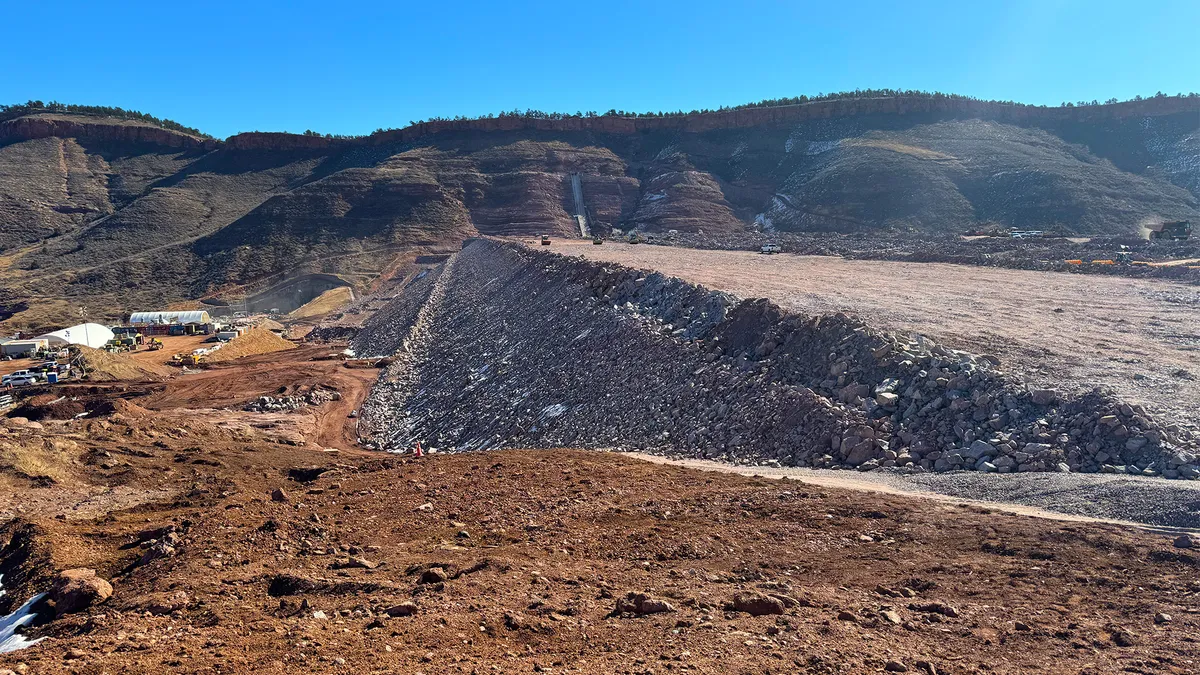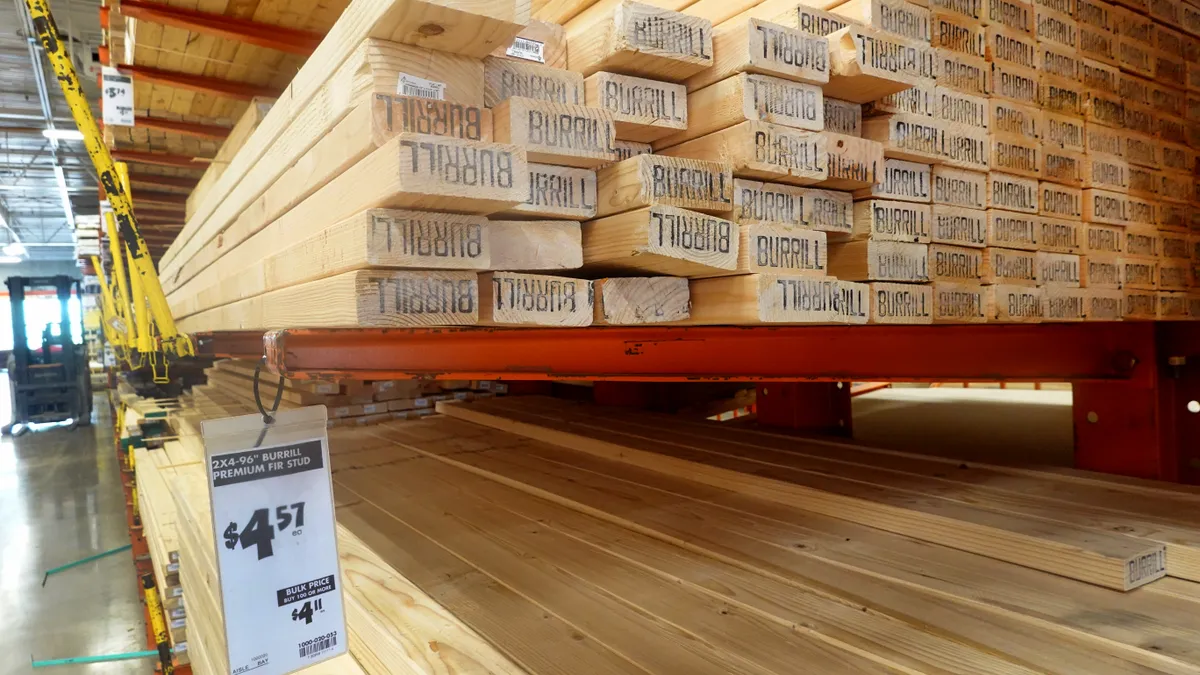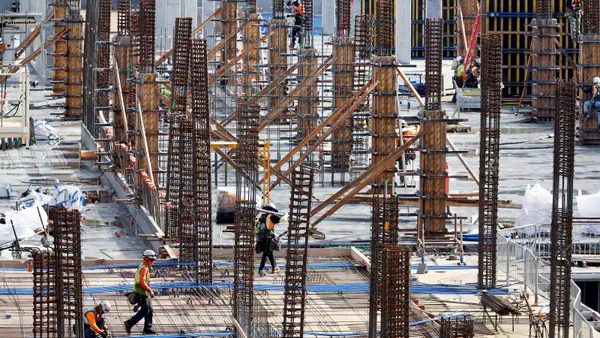Colorado is building the country’s largest dam since 2000, at a time when dams are more likely to be coming down than going up.
Bozeman, Montana-based general contractor Barnard Construction and Swiss engineering firm Walo are building the Chimney Hollow Reservoir along the Front Range of the southern Rocky Mountains, with the goal of providing Northern Colorado residents more reliable access to water. The reservoir, a major component of the larger Windy Gap Firming Project, will store up to 90,000 acre-feet of water, according to Barnard — the volume of about 45,000 Olympic swimming pools.
The dam and reservoir will supplement water supply for six Front Range communities of about 825,000 people, said Jeff Stahla, public information officer at Northern Water, one of 12 project participants.
When complete, the dam will be 350 feet tall, according to Northern Water, making it the third-largest dam in the state and one of the tallest on the Colorado Front Range. The dam is only the second asphalt core dam to be built in the U.S., though that building technique has been popular in Europe since the 1960s.
Stalled dam finally moves forward
This is the largest dam to be built in the U.S. since the Seven Oaks Dam, a 550-foot structure constructed in California in 2000. Today, dams are more likely to be removed, with 80 coming down in 2023, according to American Rivers. In fact, there are few places left to build new dams in the U.S., per High Country News.
Some of Colorado’s Front Range communities haven’t had their own water storage. Instead, their water has been stored in another reservoir, and when there isn’t space for their water, they don’t get access to it — a problem the project aims to address.
The path towards building the dam and reservoir hasn’t always run smoothly. The project first started the permitting process in 2003, but faced lawsuits from environmental groups who wanted to stop it from transferring water from the Colorado River. Eventually Northern Water settled with those groups for $15 million.
The project broke ground in August 2021 and is expected to finish in summer 2025. It’s slated to cost $570 million for the dam itself, with another $150 million for work being done at the source of the water on the west side of the continental divide, said Stahla. Rate payers for the participating providers who will get that water are funding the project.
Dam reaching new heights
Typically dams on the Colorado Front Range have been made with clay, but there’s not enough fine-grained clay material in the reservoir’s footprint, said Stahla. So instead, it has an asphalt core.
The Chimney Hollow dam will look like other dams with a rock and gravel-filled shell, but inside will be a hydraulic asphalt mix. This isn’t like road asphalt, though. It’s not brittle, but has a very high bitumen with very small aggregate that “provides that watertight ability and a little flexibility when it’s at the center of the dam,” Stahla said.
While it’s only the second asphalt dam in the U.S. — the other is the Silver Basin Dam and Reservoir in Arizona — there are more than 200 asphalt core dams in the world. European engineers started using this technique to build reservoirs in the Alps, where there is also a lack of clay. That expertise is one of the reasons why Walo is part of the team.
After construction, it will take about three years for the reservoir to fill with water, according to Northern Water.
“By building this reservoir, it’s making firm the yield on this Windy Gap water right so that you can count on it from year to year,” Stahla said.
Edit note: This story has been changed to clarify the project's cost and funding sources and the location of the contractor.













